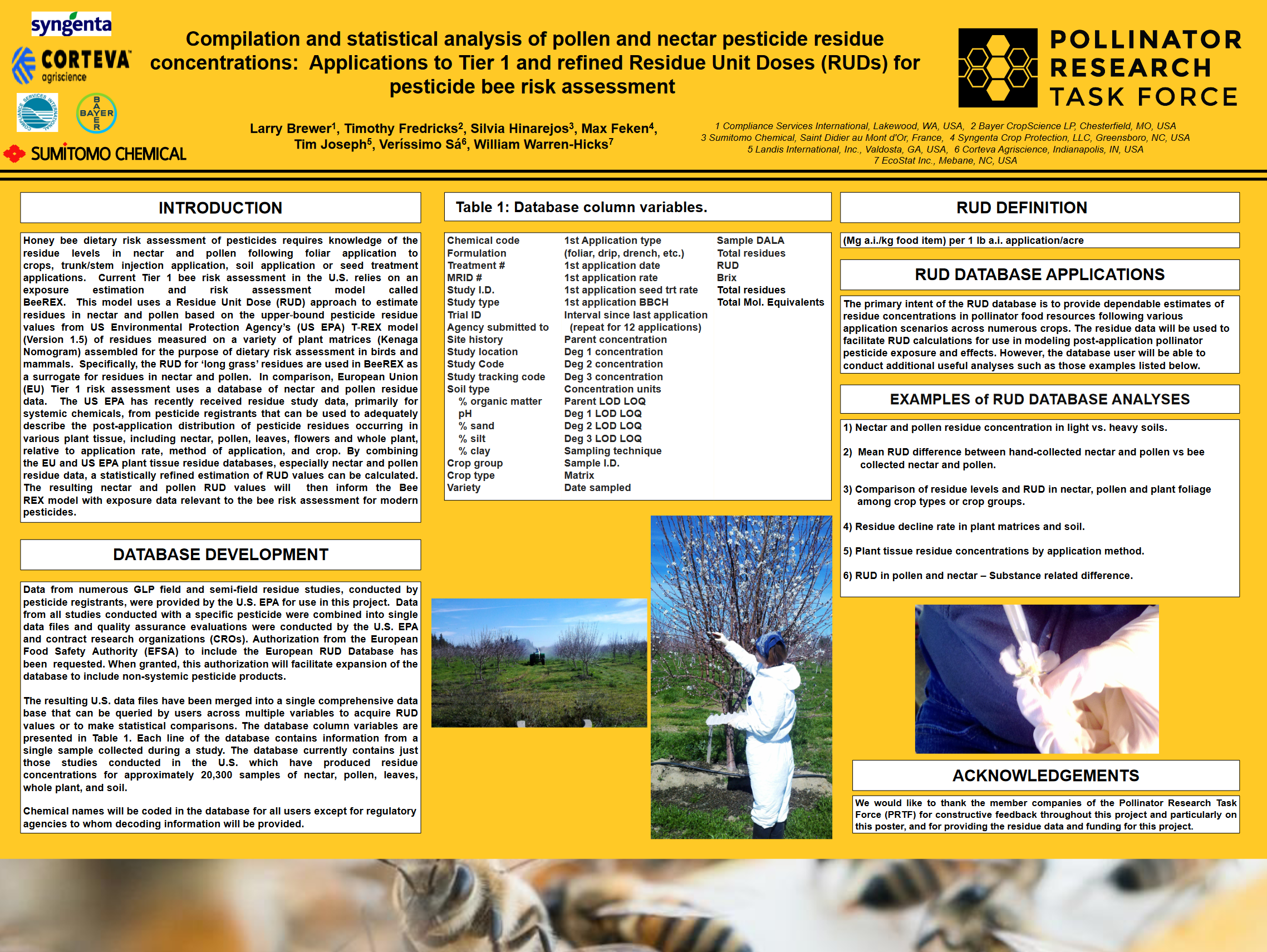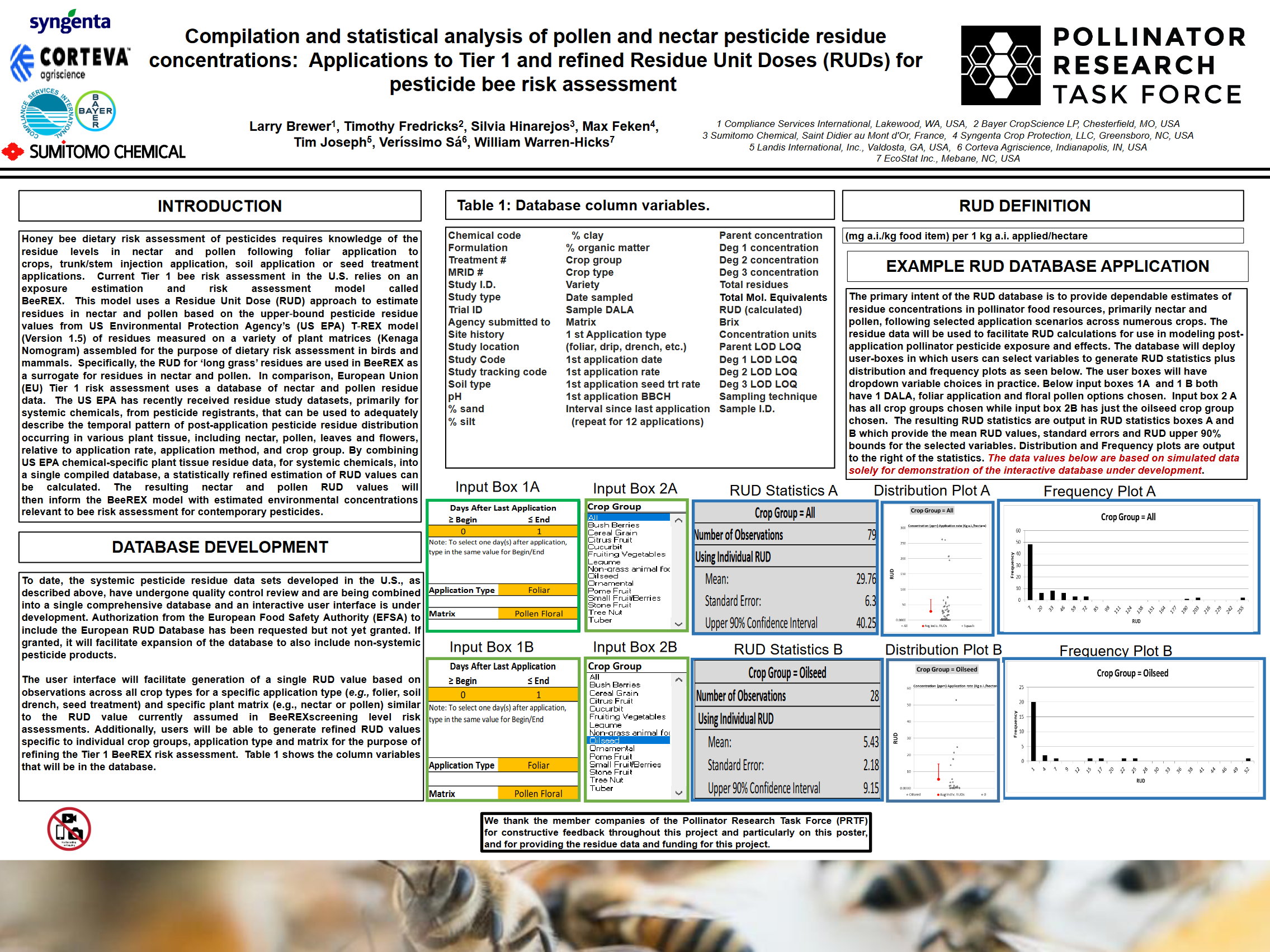Compilation and statistical analysis of pollen and nectar pesticide residue concentrations: Applications to Tier 1 and refined Residue Unit Doses (RUDs) for pesticide bee risk assessment
Honey bee dietary risk assessment of pesticides requires knowledge of the residue levels in nectar and pollen following foliar application to crops, trunk/stem injection application, soil application or seed treatment applications. Current Tier 1 bee risk assessment in the U.S. relies on an exposure estimation and risk assessment model called BeeREX. This model uses a Residue Unit Dose (RUD) approach to estimate residues in nectar and pollen based on the upper‐bound pesticide residue values from US Environmental Protection Agency’s (US EPA) T‐REX model (Version 1.5) of residues measured on a variety of plant matrices (Kenaga Nomogram) assembled for the purpose of dietary risk assessment in birds and mammals.
The RUD for ‘long grass’ residues are used in BeeREX as a surrogate for residues in nectar and pollen. In comparison, European Union (EU) Tier 1 risk assessment uses a database of nectar and pollen residue data. The US EPA has recently received residue study datasets, primarily for systemic chemicals, from pesticide registrants, that can be used to adequately describe the temporal pattern of post-application pesticide residue distribution occurring in various plant tissue, including nectar, pollen, leaves and flowers, relative to application rate, application method, and crop group. By combining US EPA chemical-specific plant tissue residue data, for systemic chemicals and the EU data base pollen and nectar pesticide RUD database involving systemic and non-systemic pesticides into a single compiled global database, a statistically refined estimation of RUD values can be calculated.
The primary intent of the RUD database is to provide dependable estimates of residue concentrations in pollinator food resources, primarily nectar and pollen, following selected application scenarios across numerous crops. The resulting nectar and pollen RUD values will then inform the Bee REX model with estimated environmental concentrations relevant to bee risk assessment for contemporary pesticides.


